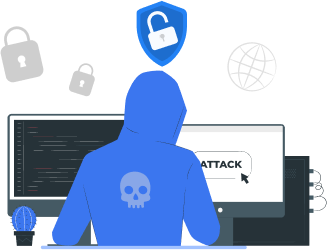Why Threat hunting is Critical?
Security personnel can’t afford to believe that their security system is impenetrable. They must remain ever vigilant for the next threat or vulnerability. Rather than sit back and wait for threats to strike, cyber threat hunting develops hypotheses based on knowing the behaviors of threat actors and validating those hypotheses through active searches in the environment. With threat hunting, an expert doesn’t start from an alert or even Indicators of Compromise (IOC) but deeper reasoning and forensics. In many cases the hunter’s efforts create and substantiate the alert or IOC. Cyber threat hunting aggressively assumes that a breach in the enterprise has or will occur. Security personnel hunt down threats in their environment rather than deploy the latest tool.

